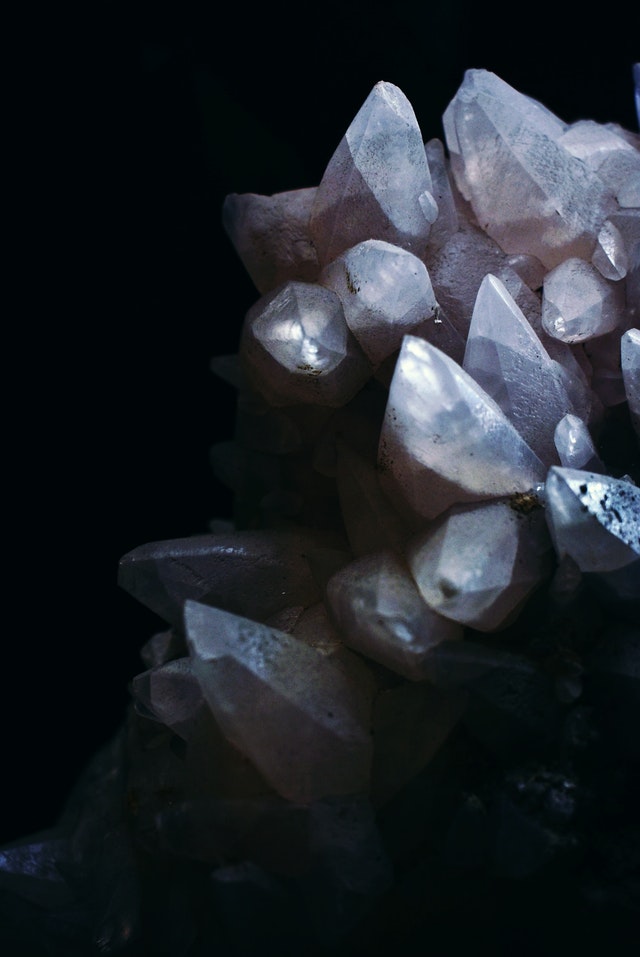HAVING now thought to be independently the primary actual properties through which one
can recognize a valuable stone, let us endeavor to give as great a thought as the printed page can
pass on of how one ought to approach deciding to what species a jewel has a place.
Indications of Wear in an Emerald. To make the matter more concrete, and in this way more
intriguing, let us think about a genuine case, the latest issue, truth be told, that the creator has needed to
tackle. A woman of some abundance had bought, for a huge whole, a green stone which suspected to
be an emerald. Following a couple of long periods of wear as a ring stone she saw one day that the stone had
dulled around the edges of its table,[110] and imagining that that should not to be the situation with a
genuine emerald, she engaged a vendor in jewels to know whether her stone was a genuine emerald. The
precious stone dealer revealed to her honestly that, while he was skilled in all issue relating to
jewels, he was unable to make certain of himself in regards to hued stones, and encouraged the woman to see
the creator.
The matter being accordingly presented, the woman was on the double educated that even a genuine emerald may
give indications of wear following a couple of long periods of the hard utilize that goes to a ring stone.
While emerald has, as we found in the exercise on hardness, a level of hardness appraised as almost 8
(71⁄2 in the table), it is in any case a somewhat weak material and the long arrangement of little blows that
a ring stone will undoubtedly meet with will cause minute yielding along the uncovered edges and
corners of the top features. This being reported, the initial phase in the assessment of the stone was
to clean it and to give it a cautious assessment with a ten-power focal point. (An[111] aplanatic trio
will be discovered best for this reason.)
Shading. The tone was, obviously, the most clear property, at the same time, as has effectively been said, shading
isn't to be depended upon in all cases. For this situation the shading was a decent emerald green however a piece
bluer than the best grass green. A fine Maine tourmaline may move toward this stone in
shading, so it got important to think about this chance. A glass impersonation, as well, may have a
shading equivalent or better than this.
Flaws. While noticing the shading, the blemishes of the stone asserted consideration. They
comprised primarily of moment rugged breaks of the character impossible to miss to weak materials, for example,
both emerald and tourmaline. That far will be noted both of the above minerals may have
outfitted the woman's diamond. As glass can be falsely popped to create comparative blemishes the stone
might have been just an impersonation to the extent anything yet found out about it goes.[112]
Record Test. The subsequent stage was to test its hardness by tenderly applying a fine record to an uncovered
point at one corner of the support. The document slipped on the material as a skate slips on ice. Obviously
we didn't have to do with a glass impersonation.
Refraction. Realizing since we had a genuine hard mineral, it stayed to be resolved what
mineral it was. On holding the stone in direct daylight and mirroring the light onto a white card it
was seen on the double that the material was doubly refracting, for a progression of twofold pictures of the
back aspects showed up. These twofold pictures may have been delivered by tourmaline just as
by emerald. (Not anyway by glass which is independently refracting.) If an immediate understanding refractometer
had been accessible the matter might have been settled on the double by perusing the refractive files of
the material, for tourmaline and emerald have distinctive refractive lists as well as have
twofold refraction to various degrees. Such an instrument[113] was not accessible at that point and
will barely be accessible to the majority of the individuals who are considering this exercise, so we can go on with our
record of the further testing of the green stone.
Hardness. A test upon the outside of a quartz gem showed that the stone was harder than
quartz (however so is tourmaline). A genuine topaz gem was excessively hard for the ring stone, whose edge
slipped over the smooth topaz surface. The green stone was in this way not a green corundum
(Oriental emerald) as the last has hardness 9 and scratches topaz.
With hardness obviously somewhere in the range of 7 and 8 and with twofold refraction and with the sort of imperfections
particular to rather weak minerals we had without a doubt either a tourmaline or an emerald.
Dichroism. The dichroscope (which may have been utilized a whole lot sooner in the test however was not at
hand at that point) was next attempted and the stone apparently had stamped dichroism—a pale blue
green and a yellowish green[114] showing up in the two squares of the instrument when the stone
was held before the opening and saw against a solid light.
As one or the other tourmaline or emerald may hence display dichroism (the tourmaline all the more firmly,
be that as it may, than the emerald) one more test was attempted to at long last choose the matter.
Explicit Gravity. The stone was taken out from its setting and two explicit gravity
conclusions made through a particular gravity bottle and a fine compound equilibrium. The two
results, which came intently similar, arrived at the midpoint of 2.70 which concurs practically with emerald (2.74)
furthermore, which is far eliminated from the particular gravity of tourmaline (3.10). The stone was currently
unquestionably known to be an emerald, as every one of a few tests concurred with the properties of emerald,
specifically:
Shading—almost grass green.
Blemishes—like those of emerald.
Hardness—71⁄2.
Refraction—double.[115]
Dichroism—handily noted.
Explicit gravity—2.70.
While one who was familiar with bargain in fine emeralds shouldn't have to make as definite an
assessment of the stone as has recently been demonstrated above, yet for a large portion of us who don't have
numerous chances of contemplating important emeralds it is more secure to ensure by complete tests.
One other solid illustration of how to approach testing obscure stones should get the job done to finish up
this exercise, after which the understudy, who has dominated the different exercises going before this, ought to
continue to test as many "questions" as his time and industry grant to truly make his
own the matter of these exercises. It very well might be added here that the undertaking of testing a stone is a lot
more quick than this relentless exertion to show others how to do it may demonstrate. To one gifted in
these issue a couple of moments are needed for the investigation of a stone with the focal point, the
dichroscope, or the[116] refractometer, and hardness tests are quickly made. A particular gravity
test requires additional time and ought to be depended on just when there stays a sensible uncertainty
after different tests have been applied.
Presently for our last model. A red stone, cut as a pear-molded splendid, was submitted
to the author for assurance. It had been obtained by an American man of his word in Japan from an
East Indian who was in monetary waterways. Alongside it, as security for a credit, the American
acquired various more modest red stones, a somewhat blue stone, and a bigger red stone. The red stones
were completely expected to be rubies. On assessment of the bigger red stone with a focal point it was immediately
noticed that the inward design was that of logical ruby.
Testing Other Stones. Fairly ran by the declaration of this revelation the proprietor
started to expect that every one of his pearls were bogus. Assessment of the little red stones showed[117]
wealth of "silk," a particular sinewy appearance inside the stone brought about by its interior
structure. The strands were straight and equal, not bended and equal as in engineered ruby.
Minuscule air pockets of precise shape likewise showed that the little stones were characteristic rubies. They
shown dichroism and scratched topaz and it was subsequently concluded that they at any rate were
certifiable.
The pear-formed splendid which was first referenced was of an impossible to miss, marginally yellowish, red
shading. It was translucent and liberated from any striæ both of the straight or bended sorts. It had in
truth no imperfections aside from a fairly enormous scratch on one of the back surfaces close to the support. This was most certainly not
in proof from the front of the stone and had obviously been left by the Oriental diamond shaper to
stay away from misfortune in weight while cutting the stone.
The particular yellowish character of the red shading drove us to presume ruby spinel. The stone was
along these lines reviewed with the dichroscope[118] and found to have no dichroism. The daylight
card test, as well, showed that the stone was independently refracting.
A trial of the hardness showed that the material scarcely scratched topaz, yet was assaulted by
sapphire. It was accordingly decided to be a red spinel.
The huge pale blue stone which the courteous fellow procured with the red stones end up being iolite,
at times called cordierite or water-sapphire (Saphir d'eau), a stone rarely found in this
country. It had stamped dichroism—showing a smoky blue tone one way and a yellowish
white in another. The thing that matters was so set apart as to be effectively seen without the dichroscope.

